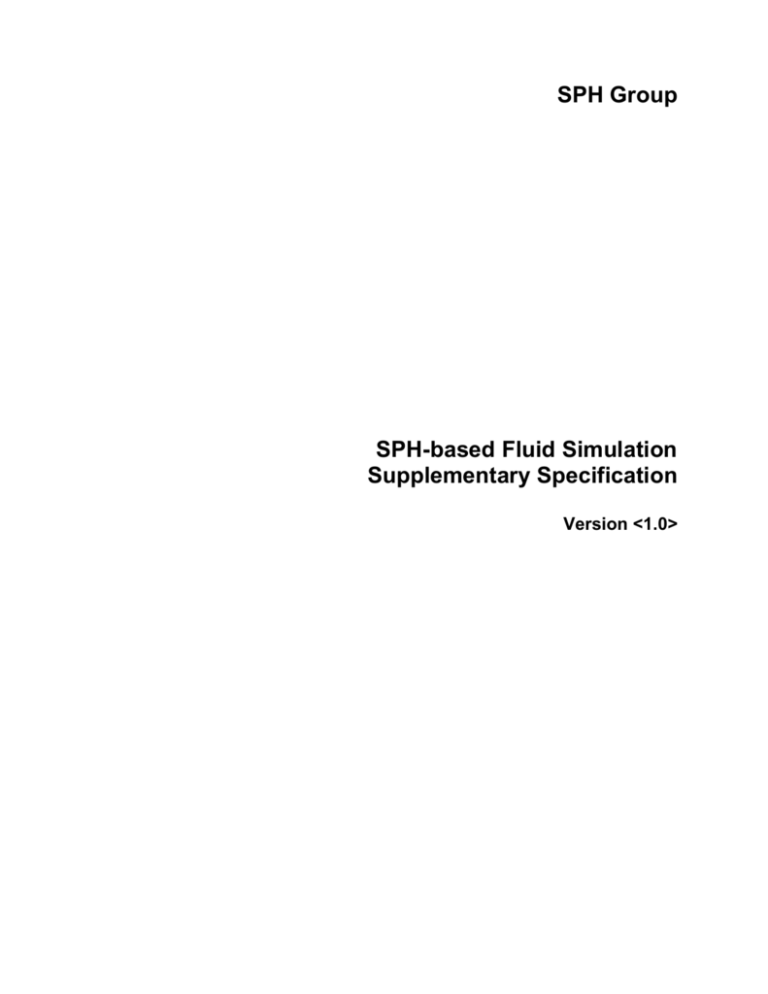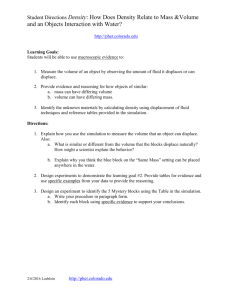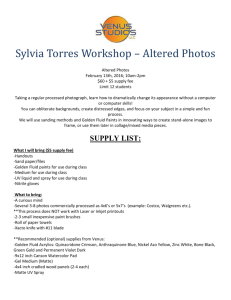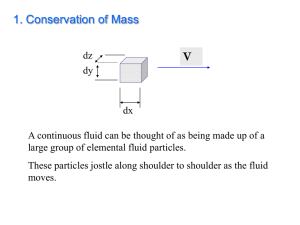Supplementary Specification
advertisement

SPH Group SPH-based Fluid Simulation Supplementary Specification Version <1.0> SPH-based Fluid Simulation Supplementary Specification <document identifier> Version: <1.0> Date: 6/30/2009 Revision History Date 6/30/2009 Confidential Version Draft Description Initial release-draft <Company Name>, 2016 Author Hong Chen Page 2 SPH-based Fluid Simulation Supplementary Specification <document identifier> Version: <1.0> Date: 6/30/2009 Table of Contents 1. 2. 3. 4. 5. 6. 7. Introduction 4 1.1 1.2 1.3 1.4 1.5 4 4 4 4 4 Purpose Scope Definitions, Acronyms, and Abbreviations References Overview Functionality 4 2.1 2.2 2.3 2.4 4 4 4 4 Simulate fluid particles in a container Some attributes of fluid particles are alterable Draw a surface for the fluid with the surface particles Use LOD to accelerate the simulation of the fluid surface Usability 5 3.1 3.2 5 5 Design for Ease-of-Use Off-line Help Reliability 5 4.1 5 Availability Performance 5 5.1 5.2 5 5 Simulation Fluid Particles with no surface Response Time Simulation Fluid with Surface and Particles Response Time Supportability 5 6.1 5 New Releases Support Design Constraints 5 7.1 5 Confidential Platform Requirements <Company Name>, 2016 Page 3 SPH-based Fluid Simulation Supplementary Specification <document identifier> Version: <1.0> Date: 6/30/2009 Supplementary Specification 1. Introduction 1.1 Purpose The purpose of this document is to define requirements of the SPH-based Fluid Simulation system. This Supplementary Specification lists the requirements that are not readily captured in the use cases of the use-case model. The Supplementary Specifications and the use-case model together capture a complete set of requirements on the system. 1.2 Scope This Supplementary Specification applies to the SPH-based Fluid Simulation system which will be developed by the SPH group. The SPH-based Fluid Simulation System will simulate in the way the particles of fluid run and take itself into other application such as scattering crowds at crisis. This specification defines the non-functional requirements of the system; such as reliability, usability, performance, and supportability as well as functional requirements that are common across a number of use cases. (The functional requirements are defined in the Use Case Specifications.) 1.3 Definitions, Acronyms, and Abbreviations See ‘Glossary.doc’ file 1.4 References Particle-Based Fluid Simulation for Interactive Applications Matthias Müller, David Charypar and Markus Gross Eurographics/SIGGRAPH Symposium on Computer Animation (2003) Smoothed Particle Hydrodynamics G.R.Liu M.B.Liu Hunan Universisy Press 1.5 Overview See catalog 2. Functionality 2.1 Simulate fluid particles in a container Thousands of fluid particles fall freely down into a container and acts like fluid particles. The particles should move in the way like SPH-based models. 2.2 Some attributes of fluid particles are alterable The attributes of fluid particles including initial position, numbers of fluid particles, the external force on the particles and the angle of user should be alterable and changes as user wants. 2.3 Draw a surface for the fluid with the surface particles Firstly the system should distinguish the surface particles from all particles. Secondly the system should make orderly every three particles of the surface ones as a triangle. Besides with the construction of triangles, the normal for each triangle should also be correctly calculated. 2.4 Use LOD to accelerate the simulation of the fluid surface As the simulation of the fluid surface is based on all the surface particles, the system will have magnificent work for calculation, simulation and rendering, only to find that it is difficult to make the system real time with the current hardware devices. The system should try to use LOD to simply the surface triangles and accelerate the simulation of the fluid surface. Confidential <Company Name>, 2016 Page 4 SPH-based Fluid Simulation Supplementary Specification <document identifier> 3. Version: <1.0> Date: 6/30/2009 Usability 3.1 Design for Ease-of-Use The user interface of the SPH-based Fluid Simulation system shall be designed for ease-of-use and shall be appropriate for a computer-literate user community with no additional training on the System. 3.2 Off-line Help Each feature of the SPH-based Fluid Simulation system shall have built-in off-line help for the user. Off-line Help shall include step by step instructions on using the System. Off-line Help shall include definitions for terms and acronyms. 4. Reliability 4.1 Availability SPH-based Fluid Simulation system shall not be down every 3 hours’ simulation. 5. Performance 5.1 Simulation Fluid Particles with no surface Response Time The simulation for the particles should be more than 5 fps. 5.2 Simulation Fluid with Surface and Particles Response Time The simulation for the surface and particles should be more than 1 fps. 6. Supportability 6.1 New Releases Support The SPH-based Fluid Simulation system will be released iteratively. 7. Design Constraints 7.1 Platform Requirements The SPH-based Fluid Simulation system shall operate on any personal computers with Windows system and OpenGL DLLs. Confidential <Company Name>, 2016 Page 5






